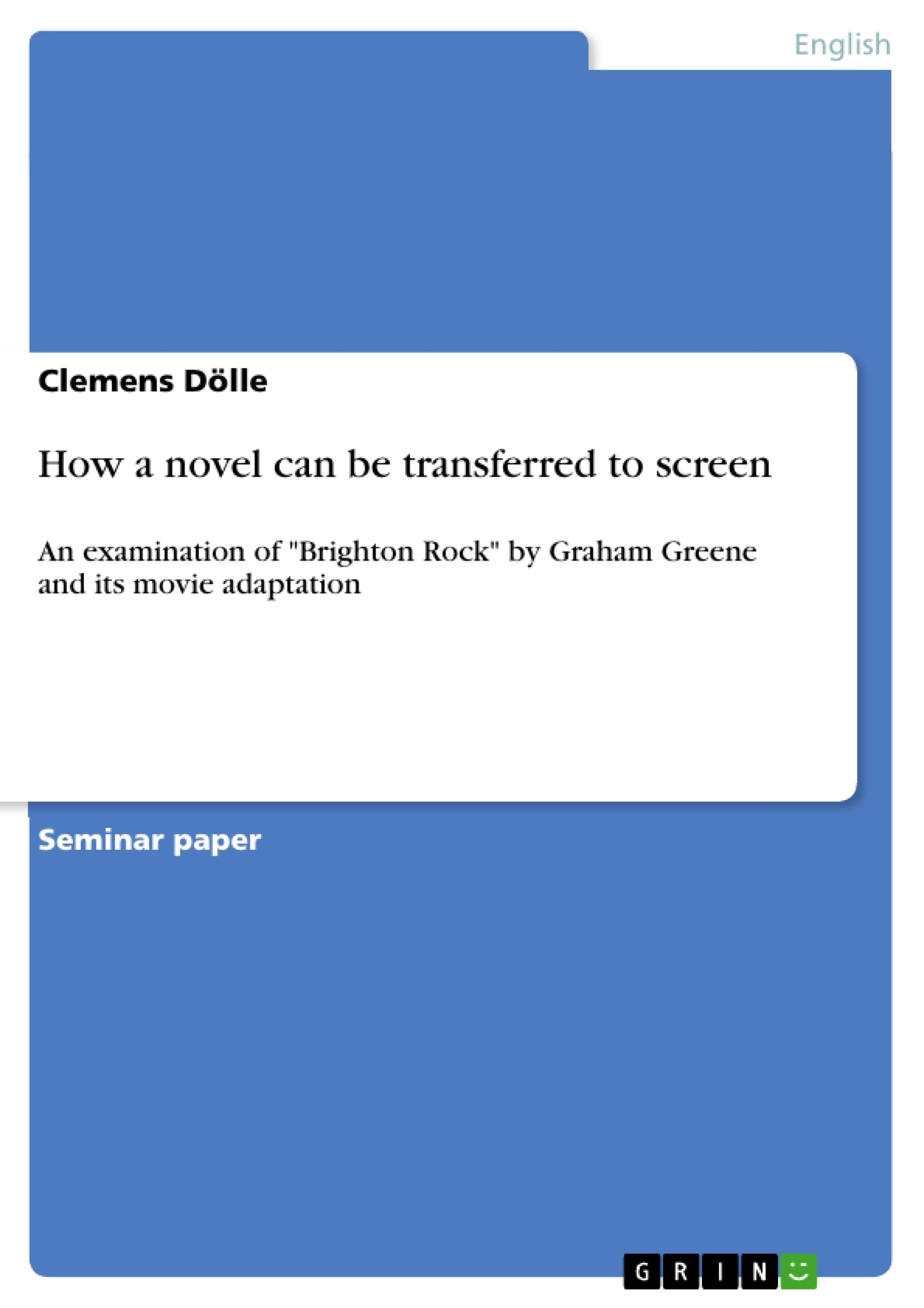This paper has the purpose to find out about the general topic of adaptation, it will name reasons why certain sections of the novel “Brighton Rock” by Graham Greene have been altered in favor of the movie adaptation and it will show the effects created by decisions the screenwriter of the movie and the novel´s author, Graham Greene himself has made.
By using both, adaptation proper as well as transfer in “Brighton Rock”, I am going to examine in how far the film is different from the novel. Furthermore, with the help of a summary, a story/plot- as well as character analysis, I will show that that certain things can be transferred and other things have to be altered/ adapted during the process of adaptation.
Film adaptations have always been a point of criticism for those who previously read the novel. They feel prompted to comment on the work directors, producers and the cast have done. The majority of people do not like the fact that something new is presented. They only want to determine in how far their own conception of the novel has been transposed.
Inhaltsverzeichnis (Table of Contents)
- Introduction to movie adaptations
- Brian McFarlane's theory of adaptation - how a novel can be transferred to screen
- Theoretical approach in practice - The Boulting's and Greene - "Brighton Rock"
- Conclusion
Zielsetzung und Themenschwerpunkte (Objectives and Key Themes)
This paper explores the process of adapting novels to film, specifically focusing on the adaptation of Graham Greene's novel "Brighton Rock." The paper investigates the reasons behind changes made in the film adaptation and analyzes the effects of those decisions. Additionally, it examines how certain elements of the novel can be transferred to film, while others require adaptation and interpretation.
- The cultural hierarchy between literature and film
- McFarlane's theory of adaptation, including "transfer" and "adaptation proper"
- The challenges of translating narrative functions from novel to film
- The importance of "cardinal functions" in both literary and filmic narratives
- The differences between the signifying systems of novels and films
Zusammenfassung der Kapitel (Chapter Summaries)
- Introduction to movie adaptations: This chapter addresses the common criticism of film adaptations, highlighting the desire to see novels faithfully transposed to the screen. It discusses the cultural hierarchy that often favors literature over film and explores the motivations behind adaptations, particularly the desire to make the story accessible to a wider audience.
- Brian McFarlane's theory of adaptation - how a novel can be transferred to screen: This chapter introduces McFarlane's theory of adaptation, outlining the two key strategies of "transfer" and "adaptation proper." It differentiates between elements that can be directly transferred from the novel and those that require interpretation and recontextualization for the film medium.
- Theoretical approach in practice - The Boulting's and Greene - "Brighton Rock": This chapter delves into the specific adaptation of "Brighton Rock," examining the collaborative efforts of the Boulting brothers and Graham Greene. It explores the adaptation process, discussing how certain narrative functions were transferred and others adapted to suit the film format.
Schlüsselwörter (Keywords)
The central keywords and focal points of this paper are: film adaptation, novel adaptation, "Brighton Rock," Graham Greene, Brian McFarlane, "transfer," "adaptation proper," narrative functions, cardinal functions, signifying systems, literary text, filmic text, cultural hierarchy, film as narrative entertainment.
- Arbeit zitieren
- Clemens Dölle (Autor:in), 2019, How a novel can be transferred to screen, München, GRIN Verlag, https://www.grin.com/document/1001063



